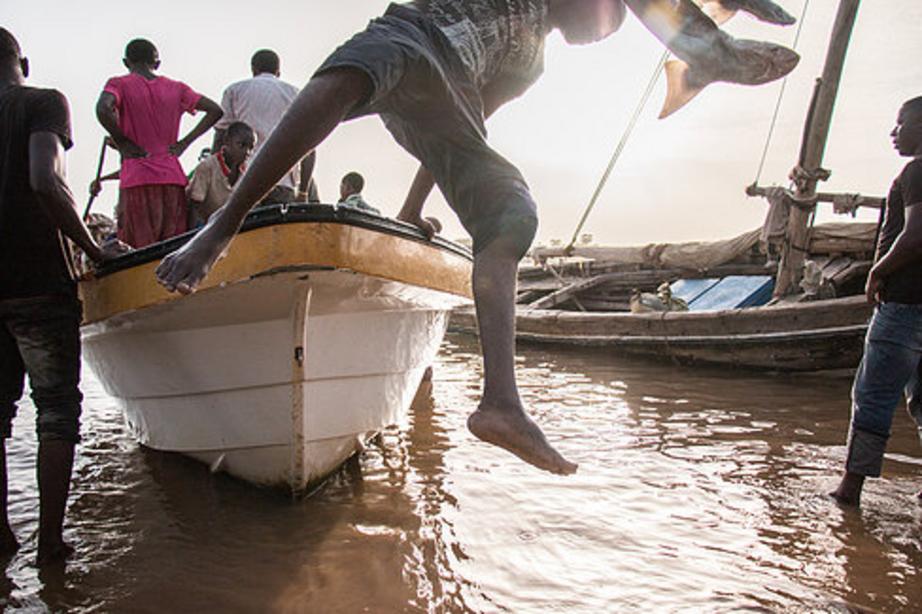The Tana River, Kenya’s lifeblood, strains under development and drought
Local fishermen and conservation groups and disaster relief organizations like the Red Cross fear that decreasing water and increasing sediment in the Tana River Delta could put as many as 2.7 million people at risk for food assistance.
- Local fishermen say that just five years ago they could catch up to 90 pounds of fish per day - now they are lucky to get 20 pounds' worth.
- Extensive mangrove forests in the Tana Delta — declared a protected site under the RAMSAR convention (an intergovernmental treaty on wetlands) in 2012 — are at risk.
- The Kenyan government is implementing plans for the country’s biggest dam to date, called the High Grand Falls Dam, as well as a scheme to irrigate a million acres along the banks of the Tana.
- While the dam has many downstream worried, the government has said it will be vital to Kenya's economic development and will help the delta in times of flooding.
Every morning, Abdu Hajy, 65, takes his canoe out into the murky waters of the Tana River Delta to fish. He’s been following the same routine, in his hometown of Kipini on the Kenyan coast, for the last four decades. But he is not sure how much longer the river can support his livelihood.
 CC.wikipedia.org
CC.wikipedia.org
Just five years ago, Hajy says he could catch almost 90 pounds of fish a day. These days, he’s lucky to get 20 pounds. Some days, he gets nothing. On a recent morning he and his fishing partner, Michael Mwangona, 50, pulled out just three small catfish from their nets.
“It’s a big worry that we won’t be able to survive here,” Hajy said.
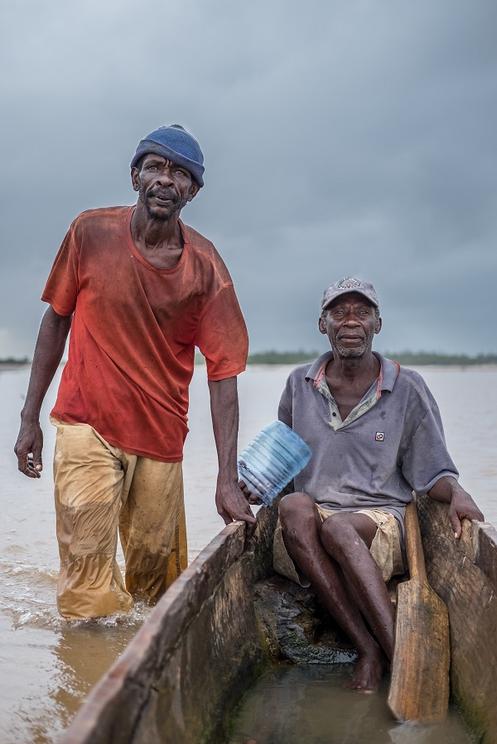
Abdu Hajy (left) and Michael Mwangona return after fishing in the Tana River Delta, on the coast of Kenya. Photo by Nathan Siegel for Mongabay.
Hajy and Mwangona aren’t the only ones dependent on the Tana who fear for their future. Dozens of farmers and pastoralists interviewed during a recent trip to the area said that they have noted decreasing water levels and increased sediment, and their crops and pastureland have suffered as a result. However, no official studies have been done to corroborate locals’ experience.
Meanwhile, the extensive mangrove forests that abound in the Tana Delta — which were declared part of a protected site under the RAMSAR convention (an intergovernmental treaty on wetlands) in 2012 — are under threat from drought, decreasing water levels and pastoralists who graze their cattle in the forests. Ramsar notes that it is the second most important estuarine and deltaic ecosystem in Eastern Africa.
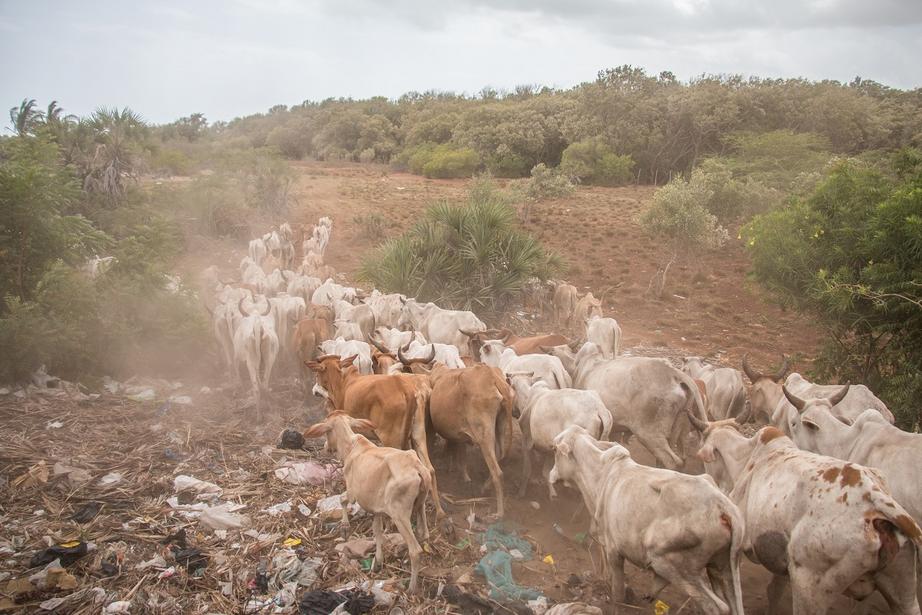
Cows are led to pasture in the mangrove forests on the Tana River Delta, in Kenya. Photo by Nathan Siegel for Mongabay.
Local and international non-governmental organizations say that upstream development on the Tana River, including numerous hydroelectric dams, massive irrigation schemes and pipelines to Nairobi, Kenya’s capital, have strained resources in the delta. An ongoing drought is compounding the problem. The Red Cross estimates 2.7 million people now need “urgent food assistance” overall in Kenya due to drought, which has been particularly harsh in coastal regions like Tana Delta.
The 620-mile Tana River is Kenya’s longest river and most important waterway. Including tributaries, it provides approximately half of the country’s electricity and 80 percent of Nairobi’s water. But many say that the Tana Delta has been excluded from conversations about development on the river and how the infrastructure projects will affect downstream populations.
“Those developing the river don’t care about us in the delta,” said Awadh Mubarak, chairman of the Kipini Community Conservation Management Forum, which manages and protects the mangrove forests along the delta and is supported by Wetlands International. “We didn’t find out about the new dam and irrigation scheme until they were already under way.”
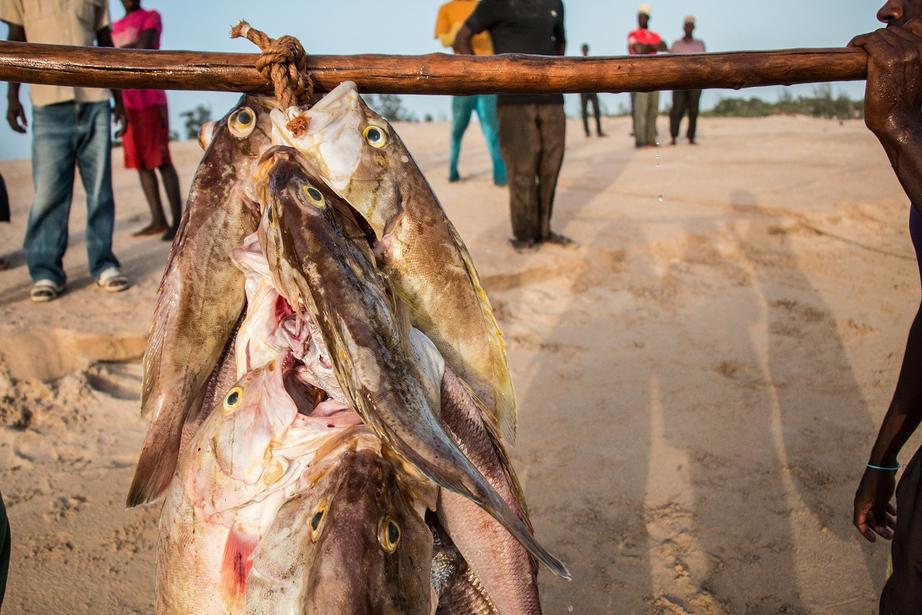
Fish are brought in to the Kipini fish market, Kenya. Photo by Nathan Siegel for Mongabay.
The dam and irrigation scheme Mubarak is referring to is looming over many people’s lives in the delta. The government is already moving ahead with plans for the country’s biggest dam to date, called the High Grand Falls Dam, as well as a scheme to irrigate a million acres along the banks of the Tana. These new developments could reduce water levels downstream by about a third, says Julie Mulonga, program manager of Wetlands International in Kenya. According to Mulonga, ultimately “the delta communities will suffer the most” from upstream developments.
The government claims that the new developments are not only essential for the continued growth of Kenya’s economy but will also help those downstream. Robinson Gaita, director of irrigation and water storage at the Kenya’s Ministry of Water and Irrigation says the new dam will serve to control water flow to the delta, which can be released during times of drought. However, locals in the delta fear that the government will prioritize farms and residents upstream.
As for irrigation schemes, Gaita says that the added food production has helped offset drought-stricken farms in the delta by way of food assistance — although elders from a half dozen villages in the delta said during recent interviews that they have so far received no food aid after more than a year of severe drought. “We are considering everybody’s needs,” Gaita said.
‘Yearning for water’
In years past, tensions over resources along the Tana Delta have led to tribal clashes. In 2013, more than 100 were killed and thousands displaced after violence broke out between Orma pastoralists and Pokomo farmers. Pasture and water were scarce, as they are now, leading pastoralists and farmers to fight over access to these precious resources.
Fear of renewed conflict is growing. With elections scheduled for August of this year and no end to the drought in sight, there could be trouble on the horizon, says Mohammed Nasser, a farmer from a riverside village called Kau. Nasser’s village was burned down in 2013 during the tribal clashes, and three people were killed. “We are scared it will happen again,” he said.
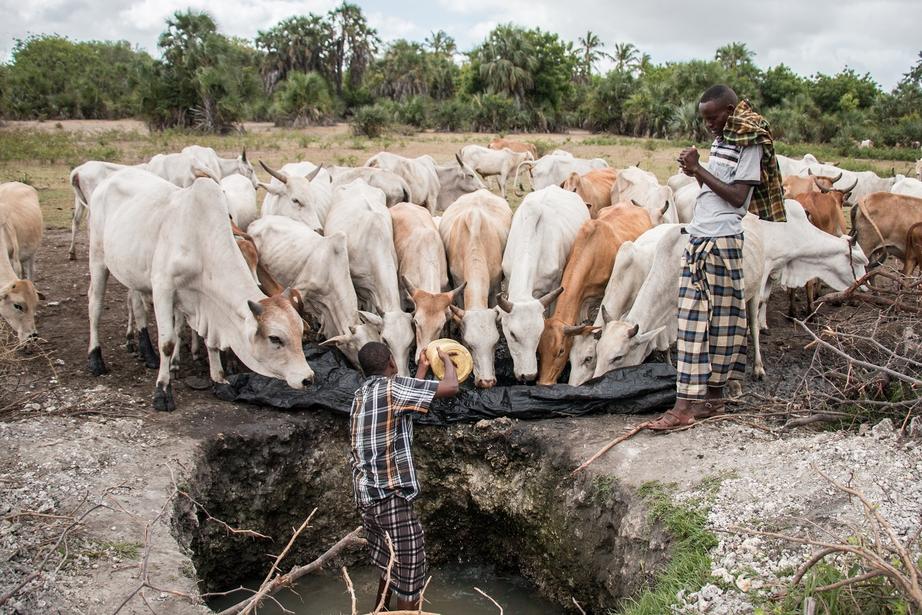
Cows drink in a dried lake near Kipini, Kenya. Photo by Nathan Siegel for Mongabay.
For cattle herders, the reality of available pastureland and water is a more pressing concern than possible tribal clashes. Suleiman Abdi, 18, has seen one-third of his family’s cattle die since the start of the drought. His relatives have taken the healthy cows more than sixty miles away for pasture. Abdi takes the remaining animals to feed in the mangrove forests along the Tana River Delta, where cows can eat tree seedlings. He is aware that grazing cows in the mangroves is destructive to the environment, but argues for survival of one species over another.
“What else can we do — let our cows die?” he asks.
Meanwhile in farming communities along the delta, entire harvests have failed. Zablon Katende, 49, is a farmer from the riverside town of Kipini. He wasn’t able to harvest any of his maize crop this year. His mango trees are also suffering and he is not sure whether he will be able to provide for his five children.
While Katende’s crop fails, water from the Tana is being used to supply a new 10,000-acre maize farm upstream, called the Galana-Kulalu Irrigation Scheme. Though the project has been a success, Katende says these kinds of developments upstream are hurting the individual farmer.
“Everyone is now yearning for water,” he said.
Possible solutions
Upstream, a number of large companies and government agencies have acknowledged the issues of water shortage and high sediment levels and are starting to tackle them. The Nature Conservancy recently launched Africa’s first water fund, in which major stakeholders like Coca-Cola and the Kenyan government support water and soil conservation measures in the upper basin of the Tana River. So far, the water fund has provided nearly 15,000 farmers with training, resources and equipment to preserve the river environment, according to The Nature Conservancy.
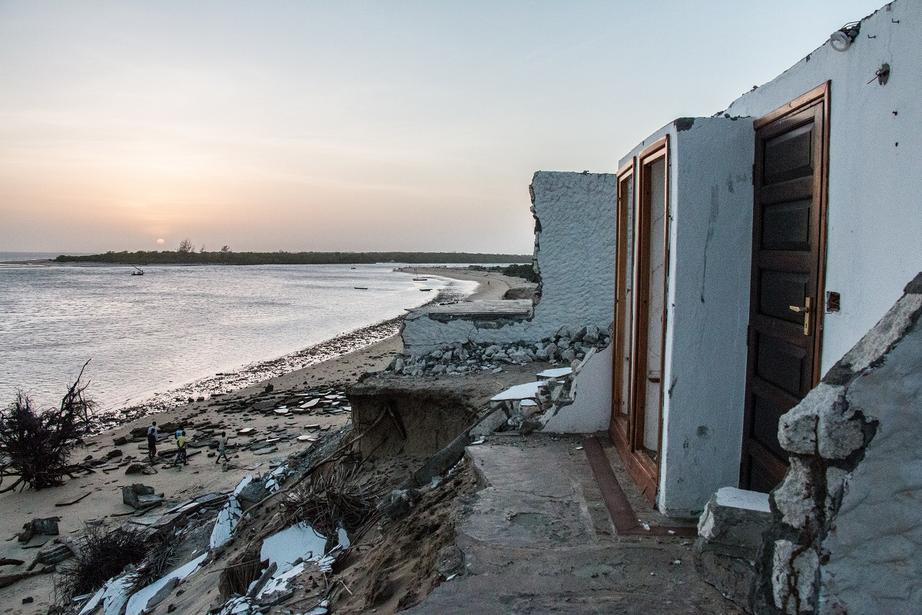
Remnants of rooms from the Tana River Lodge after erosion washed them in to the Tana River Delta, in Kipini, Kenya. Photo by Nathan Siegel for Mongabay.
But fisherman Hajy wonders why there aren’t similar projects to help those downstream. Every day at the same time that Hajy and his partner head out to the river, foreign fishermen — mostly from neighboring Tanzania — sail to fish in the ocean just beyond the river mouth.
They have the advantage of proper boats and nets, allowing them to cash in on tons of fish per day. But locals like Hajy don’t have the funds to invest in that kind of equipment, leaving him to settle for small and increasingly scarce fish in the river.
“What more can I do with this boat,” he asks, pointing to his small wooden canoe, which looks feeble compared to the sail boats used in the ocean.

